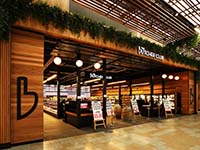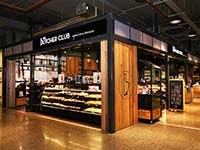The number of food businesses around the world continues to increase globally. And one reason behind this is they are flexible. Their demand is likewise high since foods and drinks are essential commodities that consumers often consume.
But to ensure that food businesses can thrive, business owners should make sure that their key ingredients in preparing their meals will be stored in the right places. Food items that tend to get spoiled easily should be stored in cold storage solutions. Others, alternatively, can already be stored on shelves and racks at room temperature.
One popular cold storage solution that businesses often possess is the commercial freezer. Freezers can help store and display food at temperatures below 0°C. If you have commercial freezers in your business, here are some things you need to do when storing food inside them.
Categorise Food Products
One of the most important things you must do when storing food inside your commercial freezers is to categorise them accordingly. Even though storing food items inside these cold storage solutions can often preserve their quality, not all products are recommended to be placed inside the freezers. Some food items that can be stored inside commercial freezers are uncooked/cooked/cured meat, uncooked/cooked poultry, raw/cooked fish, frozen dinners, soups, milk, butter, fruits, vegetables, bread, and raw pastry.
On the other hand, items that must not be stored inside your commercial freezers include foods with a crumb base, vegetables and fruits with a high water content, soft herbs, egg-based sauces, milk-based sauces, plain yogurt, hard-boiled eggs, and canned goods.
Allocate Proper Spacing
Once you have categorised your food items, it is time for you to store them inside the freezer. When placing food groups inside your commercial freezers, you must make sure that they have adequate space between their containers or boxes. Doing this ensures that the cold air can circulate inside your commercial freezers evenly. The distance of food items between each other and from the freezer walls must be around three to six inches.
Put a Label on the Shelves
Another thing that you must do when storing food inside your commercial freezers is to put a label on the shelves. The number of food items that go in and out of your business can be huge. Failure to label your shelves may only deter your employees from storing food items in their right locations. Labelling is a must to ensure that the organisation of your foods and drinks is maintained optimally. It can also optimise the workflow of your business, especially if your food business has to prepare tons of meals regularly.
Adhere to the FIFO Rule
FIFO, also known as first-in, first-out, is an inventory valuation method wherein items purchased first should be sold or used first. Using this method allows the oldest inventory on your commercial freezers to be used first before consuming the newer inventory, which helps minimise food wastage. When carrying out this rule or method, you must place the newest items at the back of the shelves and move older products forward.
Upon doing these things, your business is guaranteed to gain revenues and increase productivity. Of course, you must ensure that your commercial freezers will be maintained regularly to keep them operational for a long time. If you need some help with your commercial freezers, you can contact us at P&R Commercial Refrigeration.
Optimized by: Netwizard SEO




